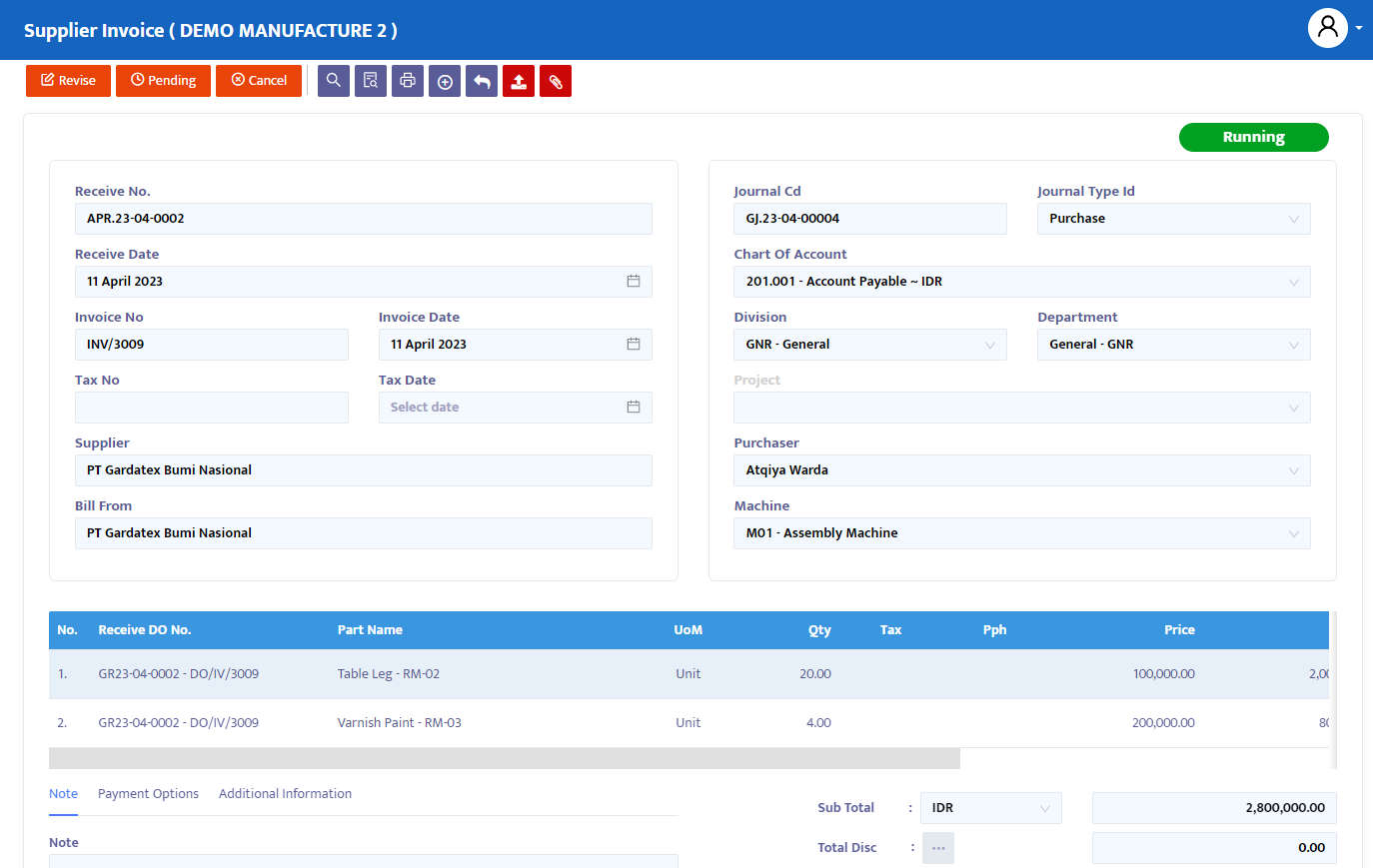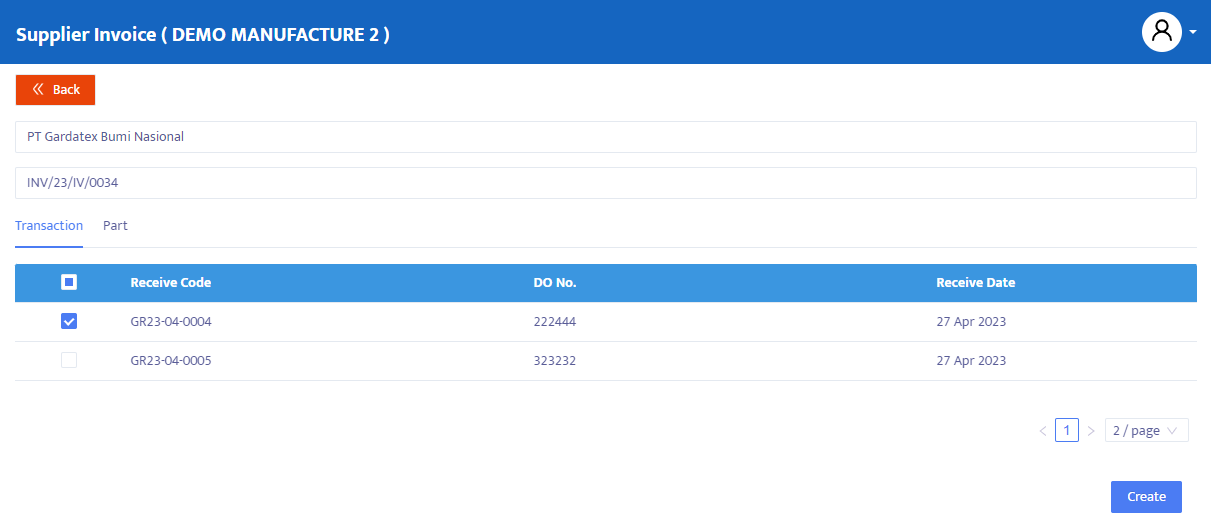Supplier Invoice
A Supplier Invoice is a document created by the supplier or seller to notify the buyer of the amount to be paid for goods or services provided. The supplier invoice typically includes information such as the names and addresses of the buyer and seller, a description of the goods or services purchased, the amount due, and the due date for payment. Supplier invoices can also be used to facilitate inventory recording and control, and cash flow monitoring in a company.
Setup
To record a Supplier Invoice transaction, select the Procurement menu then click the Supplier Invoice menu. The system will display the Supplier Invoice transaction menu as in figure 5.1.4.
Here are the steps to complete the Supplier Invoice (SI) transaction:
Click the Add Item [+] button on the list of Supplier Invoice transactions that you have opened. See in figure 5.1.4a.
Then the system will display the add item form as in figure 5.1.4b. Filter the Supplier then type the Supplier Invoice No. Tick the desired transaction then click the Create button to create a Supplier Invoice transaction.
After the Add Item process from the GRN transaction, the system will then display the Supplier Invoice transaction form that already contains information from the previously selected GRN.



Do a re-check to ensure the accuracy of the data. Here is a detailed explanation of the information in the Supplier Invoice transaction:
- In the Receive No field, the system will automatically provide numbering but you can still edit it according to the interests or standards of the company.
- In the Receive Date field, the system will provide the same date as the date on your computer when this form is opened. But you can edit the date of this Supplier Invoice form according to your needs.
- In the Invoice No field, the system will display the supplier's invoice number that you previously filled in during the Add Item process.
- In the Invoice Date field, enter the supplier's invoice date.
- In the Tax No field, fill in the tax invoice document number if needed.
- In the Tax Date field, fill in the tax invoice date.
- In the Supplier combo box, the system will display the supplier name that you previously selected.
- In the Journal CD field, the system will display the automatic journal number that the system has created.
- In the Journal Type combo box, it contains information about the journal type of the related transaction.
- In the Chart of Account combo box, select the supplier's payable account to be used.
- In the Division combo box, select the division responsible for this order if your company allocates per division.
- In the Department combo box, select the department name responsible for this order if your company allocates per department.
- In the Project combo box, select the project related to the respective request transaction.
- In the Purchaser combo box, the system will display the name of the purchaser of the purchase.
- In the Machine combo box, include the machine name if the order is related to a specific machine requirement. Ignore if not related.
After completing the data, the system will automatically display the product that you took from the previous PR transaction.
- Receive DO No, contains the GRN number information from the previously selected transaction.
- Part Name/ Product, contains the name information of the selected product.
- Quantity, contains the quantity of the product you want to order. Make changes if necessary.
- Tax, by default it will display tax data that will be imposed on the transaction in accordance with the setup that has been determined on the relevant product in the master part.
- PPh (Income Tax), like the VAT Tax above, the system will also activate PPh deduction if the relevant product is subject to a certain PPh rate.
- Price, contains information about the price of the relevant product. Make an entry or price editing if necessary.
- Amount, displays the total qty x price.
- Note, make more detailed and specific notes on the Note facility on each product you order.
Once completed, click the Save button at the top of the transaction to save the data
On the navigation button above the transaction, make the necessary transaction status changes. The options provided by the system are:
- Entry, still in the process of registering SI form transaction data into the system. At this status, data can still be edited and deleted.
- Confirm, the transaction data is confirmed to the system but has not yet been posted. At this status, data cannot be edited unless the Confirm status is first changed to the Revise status.
- Running, the transaction data is posted into the system. This status is run after the Confirm status, if you don't use the Running status then you won't be able to continue to the next form (in this case the Payment form). Just like with the Confirm status, to edit the data the Running status first has to be changed to the Revise status.
- Revise, this status is used only to edit data but cannot delete/eliminate (all) transaction data on this form.
- Pending, the transaction form is temporarily closed with the intention of delay. This status can still be opened to be continued again.
- Cancel, the transaction form is canceled and cannot be reopened.
- Close, all transaction forms are closed and cannot be reopened.
Change the Entry status to Confirm, then Running to post this transaction and use the wizard facility if you want to continue to the next form, but you can also use the manual way (add item) on the next transaction in this case Payment.
To display the transaction document, click the Preview button.